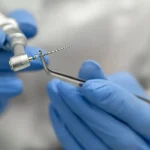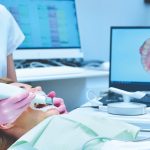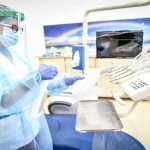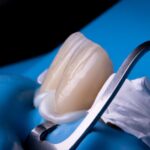
The market offers many types of disinfectants with differing characteristics in terms of theireffectiveness and compatibility with materials.
In healthcare settings, choosing the right disinfectant can be far from simple. For this reason, in 1957, Earle Henry Spaulding defined the criteria for making this choice. Let’s take a look at them.
Choosing a disinfectant based on the surface: the Spaulding criteria
The criteria defined by Spaulding are based on two classifications.
The first regards the intended use of patient-care surfaces and equipment, and the second regards the degree of mitigation of the different classes of microorganism required of the disinfectant[1].
The intended use of patient-care surfaces and equipment
The intended use of patient-care surfaces and equipment is classified into three types:
- Noncritical – this category includes all surfaces and equipment that only come into contact with intact skin
- Semicritical – this category includes all surfaces and equipment that come into contact with intact mucosae and non-intact skin
- Critical – this category includes all the equipment that is introduced directly into the human body, blood or areas of the body that are usually sterile.
The level of germicidal activity
As regards the second classification criterion, namely the level of germicidal activity, three levels of disinfection are identified: low, intermediate and high, according to the ability to destroy vegetative bacteria, mycobacteria, bacterial spores, fungi and viruses with or without a lipid envelope.
- Low-level disinfection: a process able to destroy vegetative bacteria and some fungi and viruses, but not mycobacteria or spores.
- Intermediate-level disinfection: a process able to destroy vegetative bacteria, mycobacteria, most viruses and most fungi, but NOT bacterial spores.
- High-level disinfection: a process able to destroy all microorganisms with the exception of a high number of bacterial spores.
Want to find out more? Find out how to prevent infections in a dental practice
Having revised the main criteria regarding the degree of criticality and level of disinfection, this article only deals with the disinfection of noncritical surfaces in dental practices and operating theatres.
Disinfection of noncritical items in dental clinics
According to the Spaulding classification system, noncritical surfaces and equipment require low- or intermediate-level disinfection to reduce the bioburden.
The noncritical items found inside a dental clinic include:
- x-ray machine cones;
- facial arches;
- whitening lamps;
- extraoral video cameras;
- cameras.
Treating floors, walls and furnishings
The surfaces, on the other hand, include the floors, walls and furnishings of the practice that do not come into contact with staff or contaminated instruments[2].
It is not necessary to disinfect these surfaces (CDC guidelines), which can simply be kept clean and washed, as for domestic surfaces (housekeeping).
The hygiene level of surfaces can be monitored using indicator strips able to detect dirt residues. These are tests that are commonly used in the food sector, as they detect protein residues above 40 BSA (the dirty/clean cut-off value established by the European Pharmacopoeia)[3].
Zeta Hygiene is Zhermack’s complete range of cleaning, disinfection and sterilisation products that are free of phenols and aldehydes – toxic substances – and do not damage dental practice and laboratory instruments and surfaces. Innovative solutions, subjected to stringent production standards and monitored and tested in accordance with the most recent European regulations. Its rapid action, ease of use and high compatibility with materials make Zeta Hygiene the ideal solution for the most demanding professionals, guaranteeing excellent safety and absolute protection for users and patients.
Bibliography
[1] https://www.nurse24.it/studenti/standard/scelta-disinfettanti.html
[2] https://online.scuola.zanichelli.it/smd/files/2013/02/Disinfettanti.pdf
[3] https://www.ildentistamoderno.com/infezione-crociata-e-rischio-biologico-in-ambito-odontoiatrico/
Would you like information about Zhermack products and dental solutions?
Contact us




 Zhermack SpA has been one of the most important producers and international distributors of alginates, gypsums and silicone compounds for the dental sector for over 40 years. It has also developed solutions for the industrial and wellbeing sectors.
Zhermack SpA - Via Bovazecchino, 100 - 45021 Badia Polesine (RO), Italy.
Zhermack SpA has been one of the most important producers and international distributors of alginates, gypsums and silicone compounds for the dental sector for over 40 years. It has also developed solutions for the industrial and wellbeing sectors.
Zhermack SpA - Via Bovazecchino, 100 - 45021 Badia Polesine (RO), Italy.


